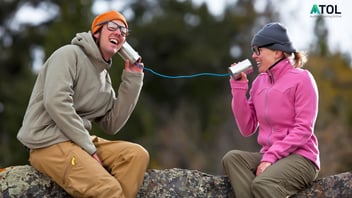.png)
In this article, I’m going to cover ISO 9001 Clause 7.1.6 Organizational knowledge. I’m going to break this clause down and turn it into something you can all understand. You’ll then be able to apply this to your own organization's system and understand what the requirements will look like for you. No more guessing!
Before we start unpacking the clause requirements, I’m going to skip to the Notes section of this clause first as this will help us to understand what on earth this word knowledge is referring to.
NOTE 1 states that:
Organizational knowledge is knowledge specific to the organization; it is generally gained by experience. It is information that is used and shared to achieve the organization’s objectives.
This organizational knowledge is all of the experience we gain along the way during our life.
I like to separate this knowledge into tacit and explicit knowledge. Explicit knowledge is the stuff that’s easy to document and therefore easier to transfer to others. While tacit knowledge, which is more in line with organizational knowledge is not so easy to express in words or pictures. For example, we can read and look at pictures on how to ride a bike but that doesn’t mean we can just hop on a bike and we’re instantly balancing down the road. This takes practice and shared experience with others to help us to get to the point where we are competent. I always think of a nurse for this example too. A nurse in an emergency department can look and feel what is going on with their patient. This touch and visual experience is something they have taken years to learn, and they would have been mentored and guided by other experienced nurses and doctors to get them there.
Continuing on to NOTE 2 which states ...
Organizational knowledge can be based on:
a) internal sources (e.g. intellectual property; knowledge gained from experience; lessons learned from failures and successful projects; capturing and sharing undocumented knowledge and experience; the results of improvements in processes, products and services);
b) external sources (e.g. standards; academia; conferences; gathering knowledge from customers or external providers).
Well, isn’t that helpful? This clause actually gives us an idea of where we can find or transfer this organizational knowledge! So now that we understand this, I’ll get to the actual clause requirements.
This clause starts off with stating that:
The organization shall determine the knowledge necessary for the operation of its processes and to achieve conformity of products and services.
This knowledge shall be maintained and be made available to the extent necessary.
My favourite part of this is that this knowledge is to be maintained and made available. Have you ever come across someone in a workplace who likes to hold on to their jobs as if they are top secret and nobody else could possibly be smart enough to do what they do? They think by doing this they are being clever and holding on to their job.
Well, I actually think the opposite. They are pigeonholing themselves into this one job that they will never be able to leave or grow out of. By sharing what you do and mentoring others you are giving yourself the opportunity to move into other roles as well as ensuring business continuity.
The final statement in this clause says that:
When addressing changing needs and trends, the organization shall consider its current knowledge and determine how to acquire or access any necessary additional knowledge and required updates.
As we mentioned in clause 7.1.1 it is up to the organization to provide sufficient resources to establish, implement, maintain, and improve the quality management system. To do this you need to see what resources (people with certain knowledge in this instance) you have access to that can meet certain requirements and if you don’t have access to this internally, you need to find this externally by outsourcing. You could also simply find the information or knowledge yourself and train someone internally – NOTE 2 gave us some examples of this earlier.
The interesting part of this clause is that there is no requirement to maintain or retain documented information. I personally find this a little frustrating from the perspective of an auditor. And if I was implementing this, I would certainly ensure I retained some evidence of knowledge sharing. In saying this you could align the requirements of clause 7.2 Competence (where documented information is required to be retained as evidence) to organizational knowledge. Knowledge-sharing evidence could be in the format of an on-the-job training checklist completed, in-house training, a completed logbook, or weekly meetings. The type of evidence depends on how your business transfers knowledge and what is relevant and suitable to how the business operates.
Organizational knowledge is a part of competence and if it is required to be shared to ensure competency then documented information is required. So, make sure you wrap your head around clause 7.2 to see how these can work together.
Now that I’ve explained all of these requirements, can you see more clearly how you could action and demonstrate these requirements in your organization and management system?
Learn more about ISO 9001 by gaining an internationally recognized qualification today!



.png?width=352&name=UPDATE%20ME%20(7).png)

.png?width=352&name=UPDATE%20ME%20(16).png)